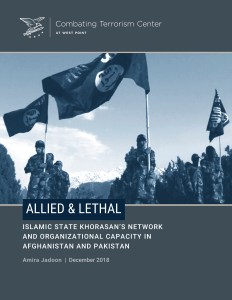
In the years following its official formation in January 2015, the Islamic State Khorasan (ISK) has conducted some of the most devastating attacks in the Afghanistan-Pakistan region, persisting in the face of U.S. airstrikes, Pakistani military operations, and clashes with the Afghan Taliban. But what exactly is ISK? What are the broader contours of ISK’s lethality, targets, and tactics in Afghanistan and Pakistan? More broadly, what explains ISK’s demonstrated ability to survive and thrive in the AfPak region, and what do its operational trends and alliances collectively tell us about its future trajectory?
To shed light on the above questions, this report draws on open-source materials to uncover various facets of ISK’s presence in Afghanistan and Pakistan. First, the report provides a comparative assessment of the geography and operational trends of ISK attacks in Afghanistan and Pakistan between January 2014 and July 2018. Second, to explain the source of ISK’s demonstrated capacity and resilience, the report maps out the universe of ISK’s alliances in the AfPak region, explaining various types of cooperation and the quality of cooperation. Third, the report analyzes the direct linkages between ISK and three of its alliances to show the extent to which ISK relies on operational cooperation to sustain its activity. The findings of this report strongly suggest that ISK’s continued ability to leverage and make effective use of a lethal, cross-border, and resourceful network in the Khorasan region will define the parameters of its future trajectory. The report concludes with an analysis of the similarities and differences in ISK’s activity in Afghanistan and Pakistan and highlights the associated security implications of its alliance hub.
 Skip to content
Skip to content

